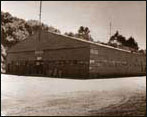The Military Intelligence Service (MIS)
1941-1952
Prior to the onset of World War II, in anticipation of possible conflict with Japan, Japanese Americans had been recruited for gathering military intelligence for the United States. Officials in the War Department conducted a survey that revealed an almost total lack of competence in the Japanese language within the armed forces. Only about 3% of the 3,700 enlisted Nisei interviewed were judged competent linguists.


